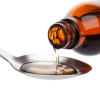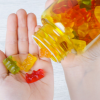Vitamin and mineral supplements are often useful if your child is not getting all the nutrients they need from their diet.
For those with very restrictive diets for behavioural or medical reasons, vitamin and mineral supplements can be crucial in maintaining good health and preventing deficiencies.
But getting a child to take these can be difficult.
Here are some tips to help to get your child to take supplements. Much of this advice will help when taking medicines too.
Should you tell your child you are putting a supplement in their food?
As their parent you are the best person to judge this. Some supplements are almost flavourless – some children won’t notice these at all added into their food or drink, particularly if the food or drink is strong-tasting. Other children will notice a slight change in taste or texture, but may still accept this.
For some children with more severe fussy eating or ARFID (Avoidant Restrictive Food Intake Disorder), adding a supplement to their food could put them off having that food entirely. This is especially a concern if they already have a very limited diet. For that reason you might decide to give the supplement separately e.g. with some favourite food from a teaspoon, having explained to them it is a medicine.
Another approach is to add a very small amount to the food and drink and then very slowly increase the dose to build their tolerance and acceptance of the changing taste.
Tips for taking powders and syrups

Many supplements can be obtained as powders, liquids or syrups. These forms are essential for babies and young children who can’t yet swallow tablets.
They can also be useful for older children as they can be more easily mixed into food and drinks into:
Below are some examples of foods and drinks powders and syrups can be added into:
- Orange juice, grape juice, apple juice or any other tasty juice
- Squashes, Fruit Shoots™, Ribena™ etc. (try adding them into the carton or bottle to further disguise)
- Milk or milk substitute, milk shake or fruit smoothie
- Lemonade or other fizzy drink
- Any of the above frozen into lollipops
- Yogurt, ice cream, rice pudding or other pudding
- Apple purée or other tasty baby food
- Peanut butter, cashew nut butter or other nut butter
- Butter or margarine
- Honey, jam, chocolate spread or Marmite™
- Homemade rice crispy cakes
- Melt chocolate and reset with supplements added in (e.g. in ice-cube trays or shaped moulds)
- Pancake mix or sprinkled on pancakes*
- Tomato ketchup, mayonnaise, or salad cream with fries or in
- Sandwiches
- Scrambled eggs*
- Spaghetti bolognese or other pasta sauces*
- Soup*
- Hummus, salsa, or other dips
*aim to add supplements after the cooking is completed
Remember, you don’t have to start with the full dose. Even getting a small amount of the supplement will be improving their nutritional intake and we can build the dose up slowly.
Tips for taking tablets and capsules
Some supplements are only available as tablets or capsules. Your doctor or pharmacist will be able to advise whether you can open the capsules or crush the tablets and use the tips for powders and syrups to get your child to take the contents. If however, tablets are the only option, there are a few things that might help.
Researchers in Canada developed a technique for children involving turning their head to the side or lifting or tipping their head that was successful in all the children they tried it with. The children involved first tried with sweets such as Tic-Tacs™ or mini M&Ms™ every night for 14 days. Instructional videos and more information can be found online, see here.
For children who need more help, Behavioural Therapists or Speech and Language Therapists may be able to offer more intensive therapy.
Tips for taking chewy supplements

Many children’s vitamin and mineral supplements can also now be purchased in a chewy, sweet like form. Some children may be willing to take this as they resemble sweets they already enjoy.
There are many different brands with different flavours aimed at different age groups. Discuss with your GP or dietitian if these are suitable for your child.
Remember you don’t have to start with a whole supplement. The child could bite or you can cut a small piece off and start with that. The portion can be increased slowly.
Using social stories

Social stories are short descriptions of a particular situation, event or activity, which include specific information about what to expect in that situation and why.
Social stories can sometimes help to explain things to a child with communication problems.
The story is personalised to your child and their individual situation.
The goal of a social story is not to change a childs' behaviour, but to help them understand a situation or event and help them cope with that better.
Lots of information on social stories and how to create them can be found at http:// carolgraysocialstories.com/ Your child’s school may also be able to help develop a social story for your child.
With many thanks to Zoe Connor, dietitian for allowing reproduction of some information from her website www.zoeconnor.co.uk
First Community provides front-line NHS community healthcare services in east Surrey and parts of West Sussex.
We provide first-rate care, through our first-rate people, offering first-rate value. For more information visit: www.firstcommunityhealthcare.co.uk
If you would like this information in another format, for example large print or easy read, or if you need help communicating with us:
First Community (Head Office)
Call: 01737 775450 Email: fchc.enquiries@nhs.net Text: 07814 639034
Address: First Community Health and Care, Orchard House, Unit 8a, Orchard Business Centre, Bonehurst Road, Redhill RH1 5EL
Twitter: @1stchatter
Facebook: @firstcommunityhcNHS
Instagram: firstcommunityhealthandcare
LinkedIn: www.linkedin.com/company/first-community-health-&-care-c-i-c-/
TikTok: www.tiktok.com/discover/first-community-health-and-care
To print this page, please select accessibility tools and the print this page icon.
For office use: PFD_TS085


